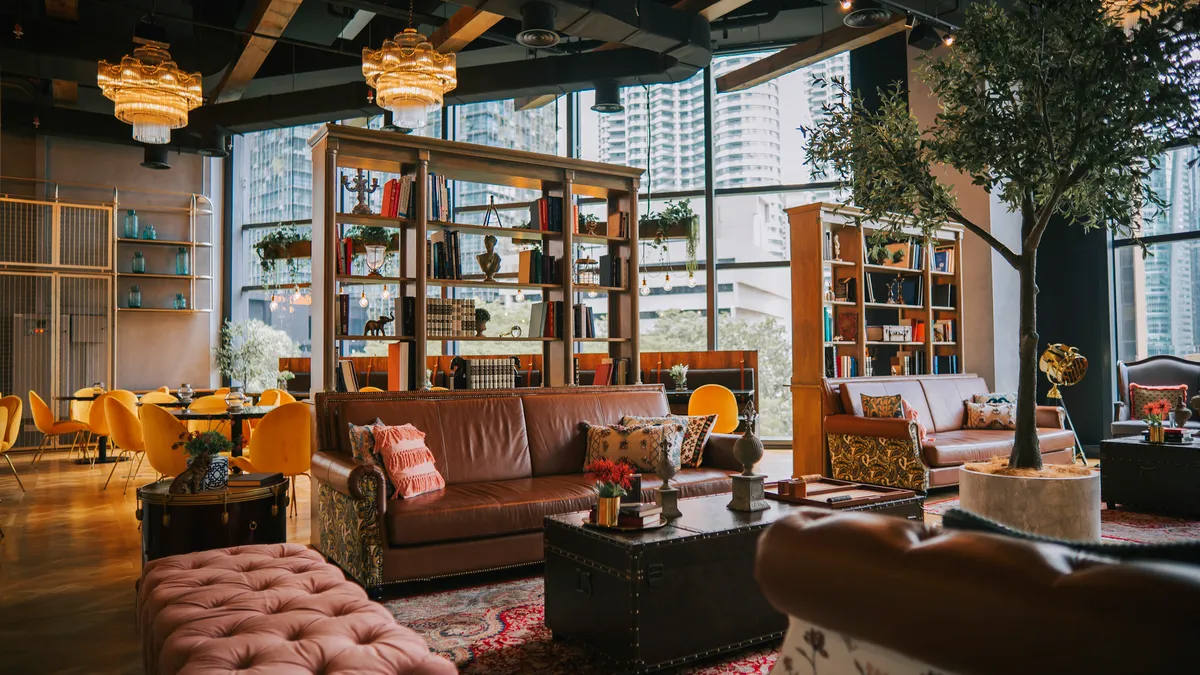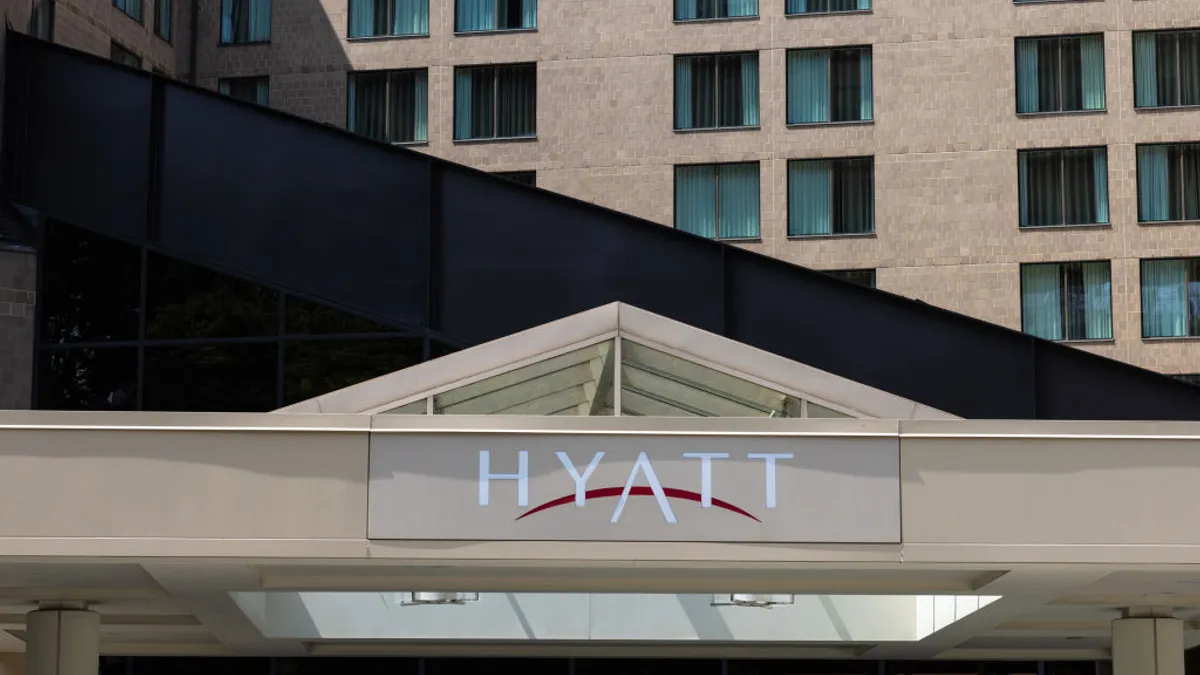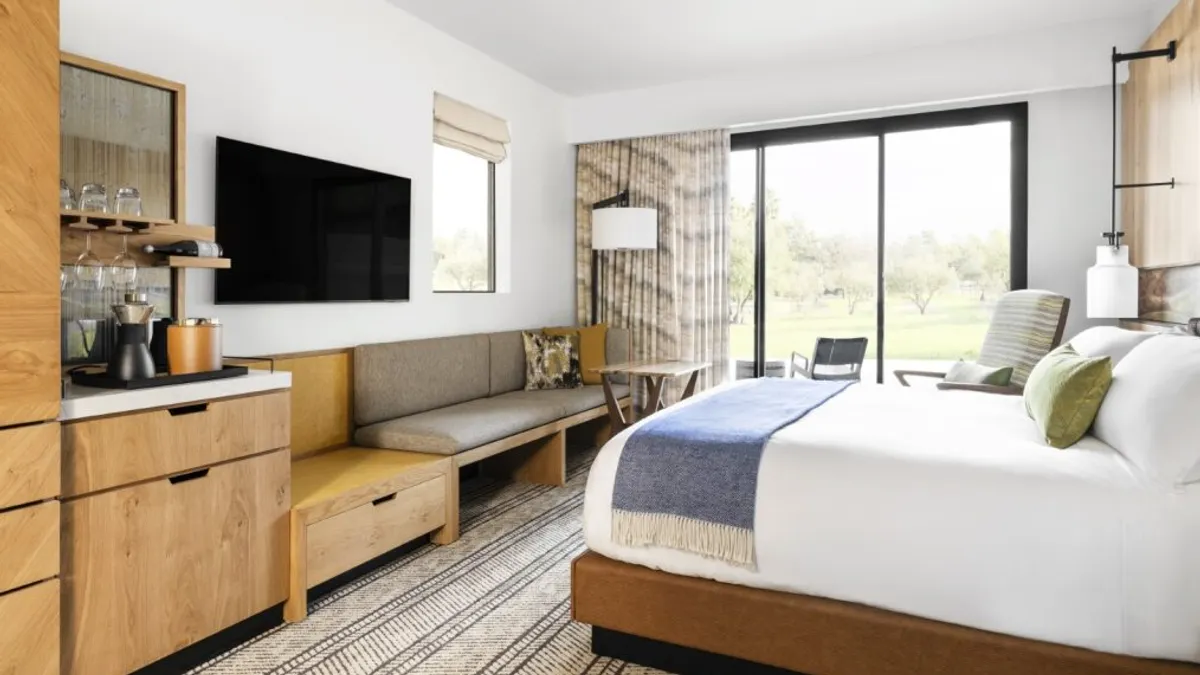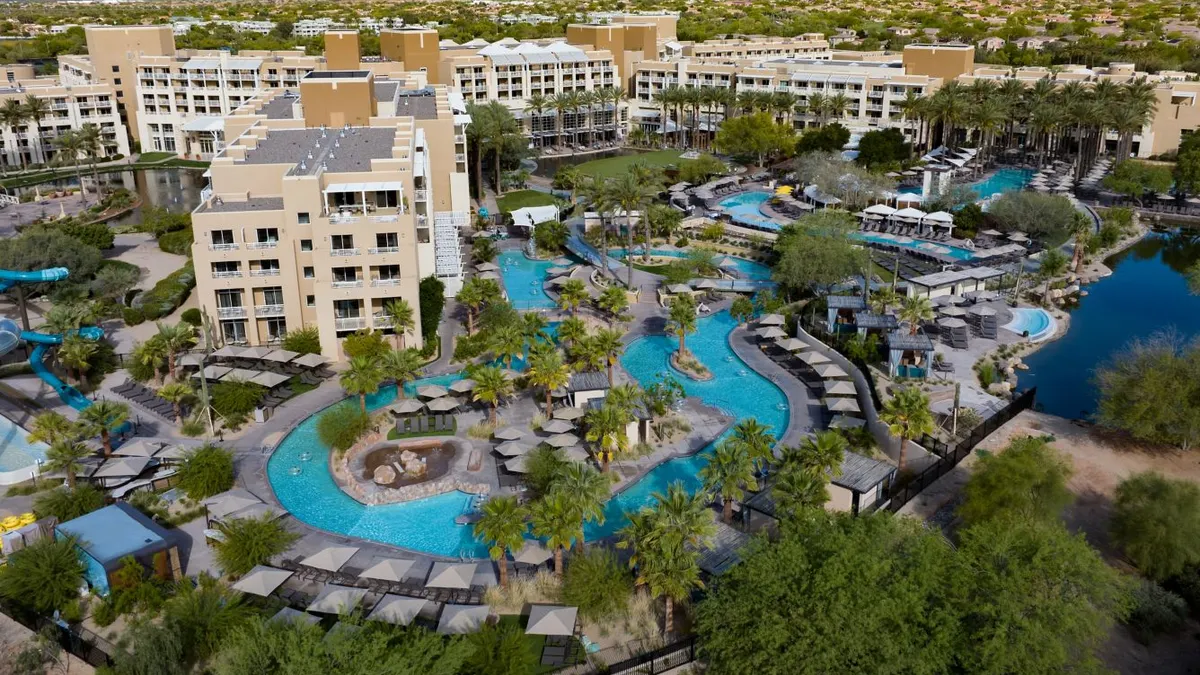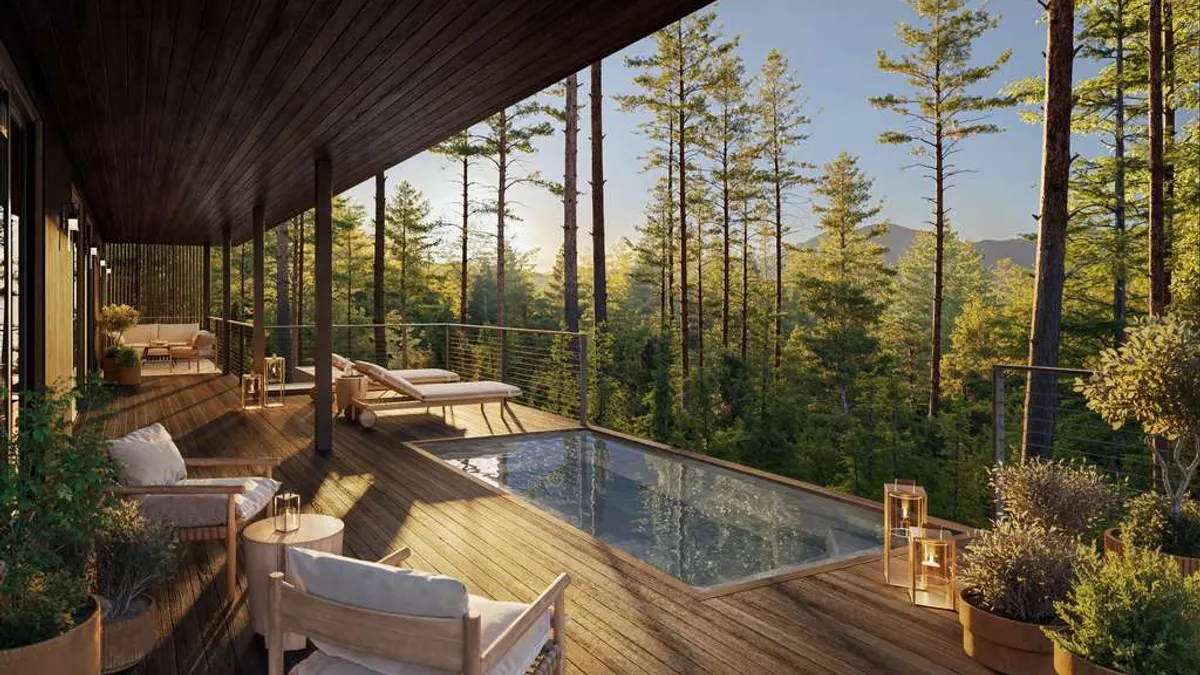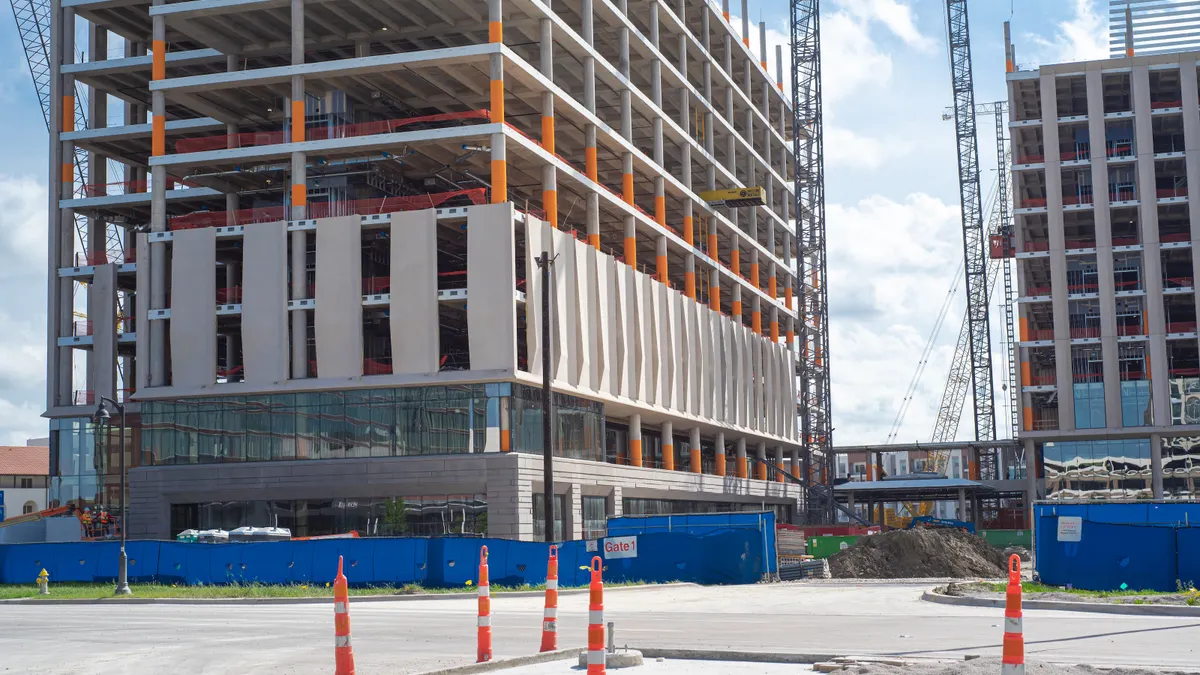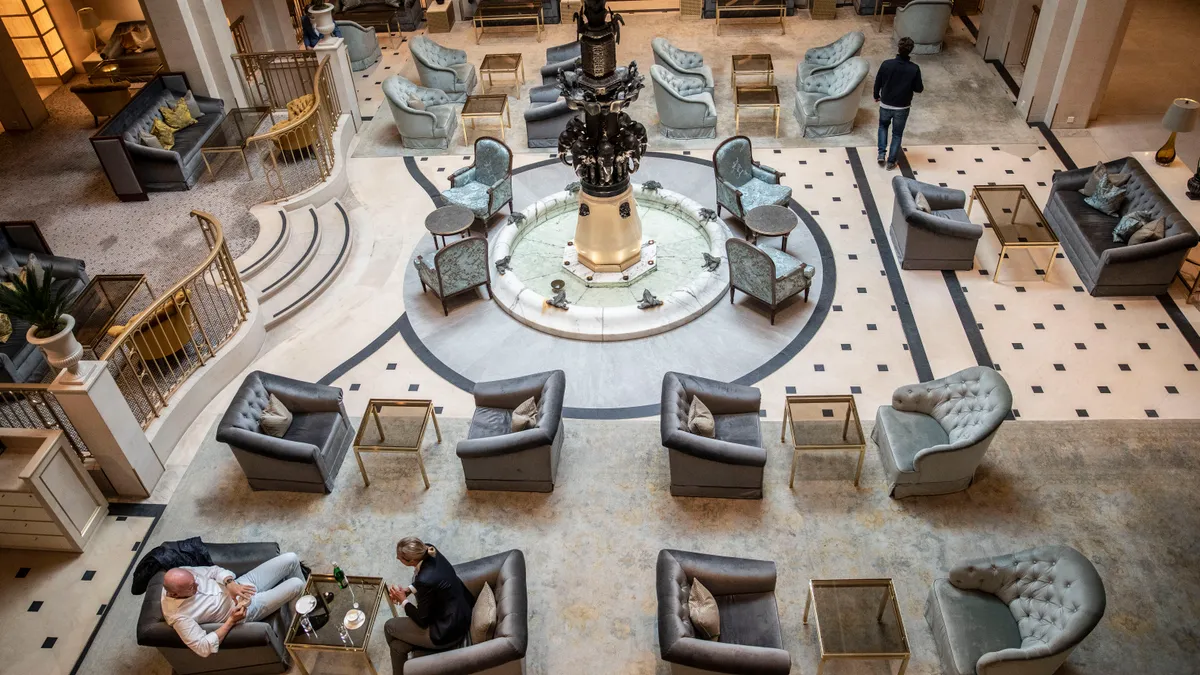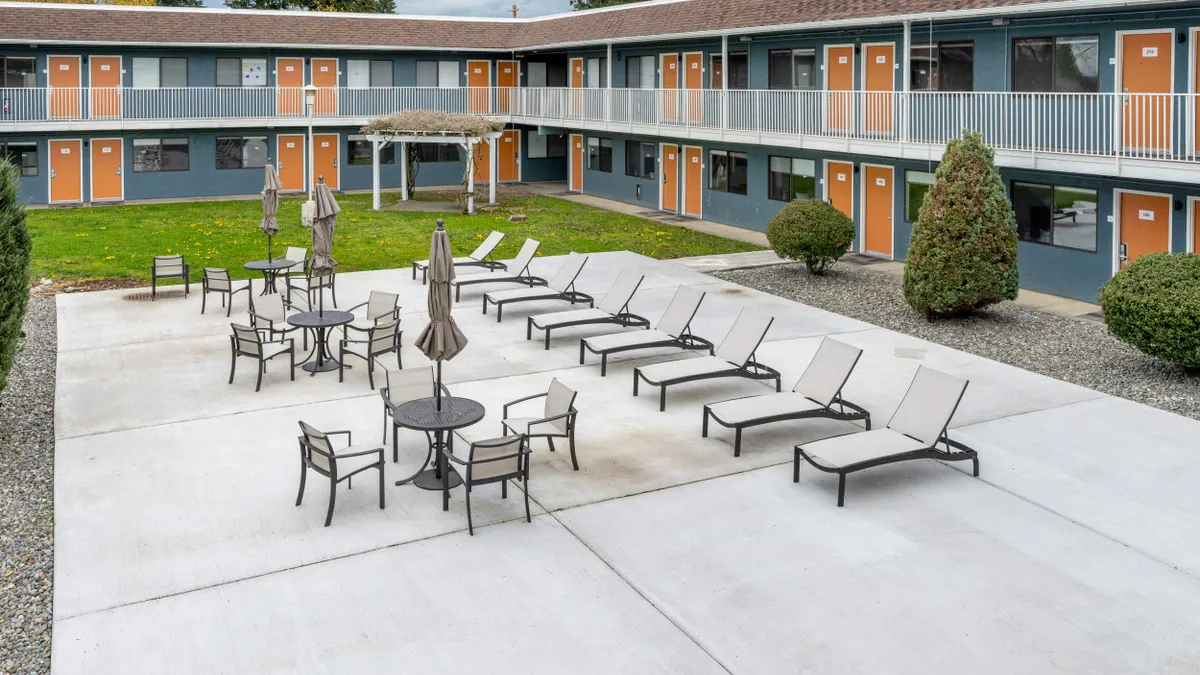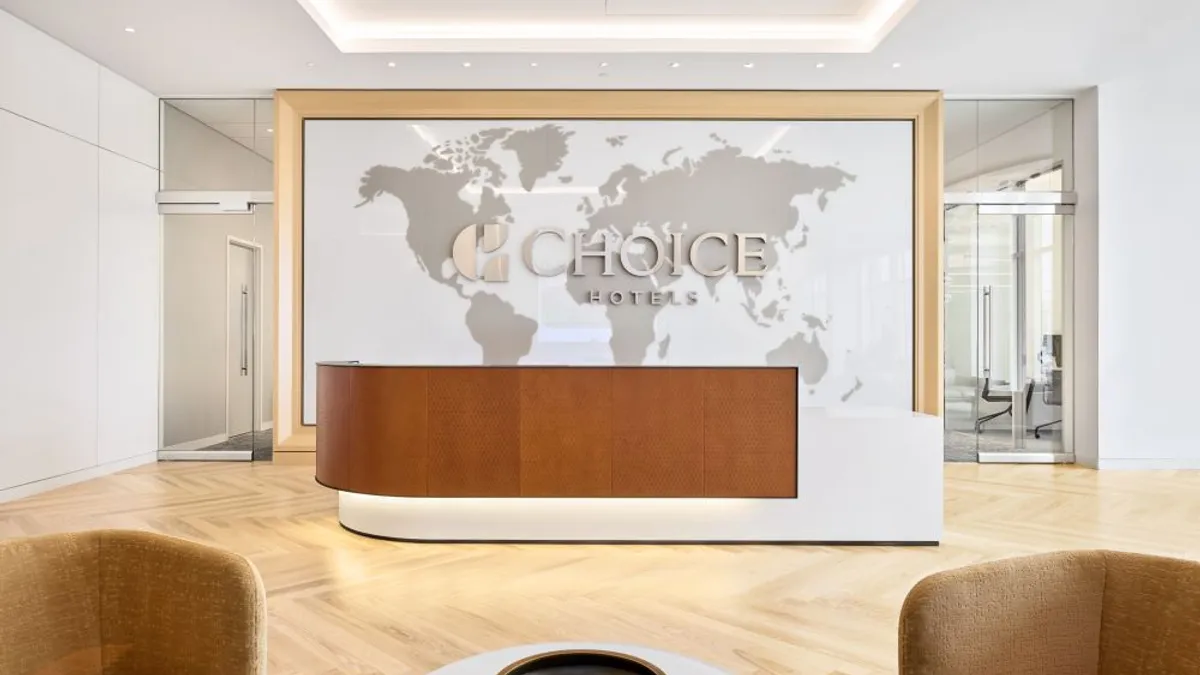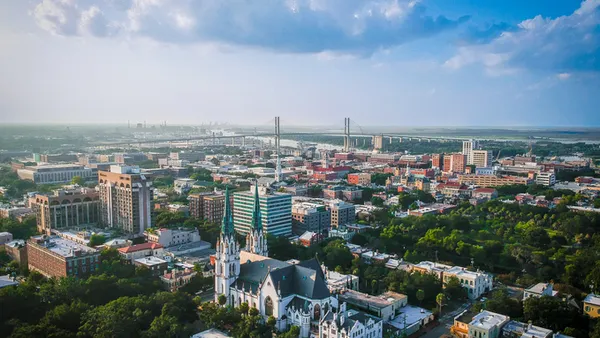Hotel renovations and conversions — cost-effective alternatives to new construction — are on the rise this year as hoteliers look to enhance their portfolios.
While many institutional investors remain on the sidelines, seated by uncertain macroeconomic factors like climbing interest rates, hotel owners are playing the long game, rehabbing their older, existing buildings to attract a new wave of travelers and drive revenue.
Those undertaking a renovation, though, are at the discretion of the brand they operate under when it comes to what design changes they can make.
Owners, however, still have some leeway in the creative process. Kobita Mukherjee, associate partner and director of interior design and hospitality lead at Minneapolis-headquartered holistic design firm BKV Group, spoke to Hotel Dive about design tricks hoteliers can use to refresh their properties — brand approved.
The renovation process
Across the country, renovations and brand conversions, combined, reached record high project counts year over year in both the first and second quarters of this year, according to data from Lodging Econometrics. In Q2 2023, renovations and conversions accounted for 1,939 projects, or 253,473 rooms, in the total U.S. hotel construction pipeline.
Mukherjee said BKV is seeing very strong activity in the hospitality space compared to other markets. The group is underway on eight hotel projects, six of which are renovations on branded properties by Marriott International, Hilton Hotels & Resorts and Choice Hotels International. The other two are new construction projects.
According to Mukherjee, a renovation on a branded hotel will occur either every seven or 10 years, depending on the property or owner’s financial situation. The hotelier is responsible for all project costs, and renovations are typically priced in the millions.
For a renovation taking place at year seven, the property will see a cosmetic upgrade with enhancements to paint, flooring, artwork and more. Whereas for a renovation at year 10, the property will most likely be completely gutted and rehabbed.
To kick off the renovation process, a designer will draw up designs for the hotel, select the fabrics, wallcoverings, art and other materials needed for the project, and work with the hotelier to get brand approval on the plan. (In BKV’s case, this takes about two months.) Once that is completed, the general contractor will begin the renovation, which usually takes six months to finish, Mukherjee said.
Design tips for hoteliers
Getting brand approval beyond a hotel’s standard property improvement plan (known as a PIP) can at times be challenging for the hotelier and designer involved, as well as for the brand itself, Mukherjee noted. For example, brands typically have set design parameters for the color palette, furniture and artwork.
However, adopting an “80-20 rule” can make design changes easier to navigate.
When working on a renovation project, Mukherjee’s team aims to keep 80% of the existing design elements in place and change 20%, incorporating different furniture, fabric, art and pillows. This keeps the property cohesive to the brand’s identity while also giving the owner some creative freedom — keeping all parties involved happy and refreshing the property enough to attract and satisfy guests as well as stay competitive in the marketplace.
Hoteliers can refresh their spaces with subtle changes, like adding small, modern pieces of furniture to the lobby and balancing those with existing pieces to create an updated layout or designated spaces.
Owners can also add depth, color or warmth to a lobby or guest room with new pillows or artwork, Mukherjee said, adding that the hotel brands she currently works with have more neutral color schemes. Artwork and other colorful design elements, she noted, can also add local flare to a property, personalizing it further.
When redesigning a hotel property, it's important for the hotelier and designer to prioritize guests’ preferences, Mukherjee added.
Younger travelers specifically want to see more plants in hotel spaces. Adding greenery to a hotel’s design, whether living or faux, can modernize a property with elements representative of the surrounding destination.
This is also a chance to center sustainability, which is at the forefront of many travelers’ minds. Mukherjee noted that BKV has begun incorporating more sustainable materials into hotel redesigns and in many cases eliminating down feather pillows, as well as fur and hide rugs.
Renovation in action
BKV is underway on a cosmetic renovation at the Cambria Hotel in Traverse City, Michigan. The owner of the Choice-branded property wants to go beyond the hotel’s standard improvement plan, and BKV is helping them do so by changing the lobby bar, modernizing the coworking spaces and making it so the furniture is “movable and usable,” Mukherjee said.
New artwork, much of which is being created by BKV’s internal branding team, is also being added throughout the Cambria hotel. This includes in the guest rooms, where the entire wall behind the headboards will be a new art piece, Mukherjee said, adding, “Our Cambria client is very artistic. He loves the art and accessories, and says, ‘I want a new trend and a new fun element [as part of this renovation.]’”
“We created a ‘wow’ moment here by having large pieces of art. ... And that gives a different flair to the property.”



